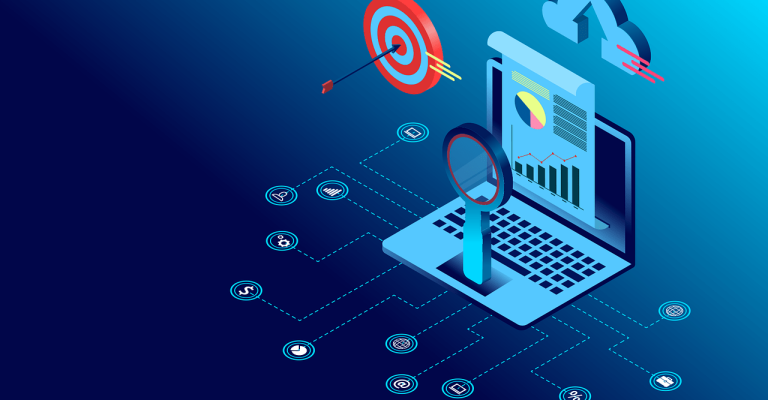E-commerce Website protect Introduction
E-commerce is transforming how we shop and interact with businesses, making our lives more convenient. However, it also attracts cybercriminals eager to exploit online transactions involving sensitive information like personal details and credit card numbers. This makes robust cybersecurity measures essential for protecting both businesses and customers.
In this article, we’ll dive into key cybersecurity practices every e-commerce site should adopt. These steps will help create a secure and trustworthy shopping environment, ensuring that customers can shop with peace of mind and businesses can maintain their reputation and operational integrity.
SSL Certificates: The Foundation of Web Security
Why It’s Crucial
An SSL (Secure Sockets Layer) certificate establishes a secure link between your website and your customer’s browser. This encryption ensures that sensitive information, like credit card details and personal data, remains private. Without SSL, any data transmitted between the web server and browser can be intercepted and read by attackers, leading to data breaches and loss of customer trust.
How to Implement
Get an SSL certificate from a trusted authority, such as Symantec, Comodo, or Let’s Encrypt, and install it on your server. Transition all web pages from HTTP to HTTPS to signal a secure connection. This not only protects data but also improves your search engine ranking, as Google prioritises secure websites.
Regular Software Updates: Don’t Leave the Back Door Open
Why It’s Crucial
Outdated software, plugins, and systems can expose vulnerabilities in your e-commerce site that hackers can exploit. Cybercriminals often scan websites for outdated software to find easy entry points.
How to Implement
Schedule regular updates for your website’s components, including the Content Management System (CMS), e-commerce software, and third-party plugins. Automated update solutions can be beneficial, ensuring that your systems are always up to date without requiring constant manual oversight. Additionally, keep track of software vendors’ security bulletins and patch releases.
Strong Password Policies: Your First Line of Defence
Why It’s Crucial
Weak passwords are easy targets for cybercriminals. Ensuring users create strong passwords significantly enhances your site’s security. Weak or reused passwords can be cracked or guessed, giving attackers easy access to user accounts and sensitive data.
How to Implement
Enforce strong password policies requiring a mix of upper and lower-case letters, numbers, and special symbols. Apply these policies to both employees and customers. Implement features like password strength meters to guide users in creating strong passwords. Encourage or require periodic password changes and use password management tools to help users manage their passwords securely.
Multi-Factor Authentication: Double Up on Security
Why It’s Crucial
Multi-Factor Authentication (MFA) adds an extra layer of security by requiring two or more forms of verification. Even if a password is compromised, MFA makes it much harder for unauthorised users to gain access.
How to Implement
Implement MFA for all administrative accounts and encourage customers to use it too. Typically, this involves sending a unique code to the user’s phone or email. You can use MFA solutions like Google Authenticator, Authy, or built-in options from your service providers. Make MFA a mandatory step for critical actions such as password resets and financial transactions.
Firewalls: The Security Guards of the Internet
Why It’s Crucial
Firewalls examine incoming and outgoing traffic to determine what should be allowed or blocked, providing a strong barrier against many types of cyberattacks. They can prevent unauthorised access and mitigate various attack vectors.
How to Implement
Deploy both network and web application firewalls. These will scrutinise incoming data packets and help filter out malicious activity. Network firewalls protect the entire network, while web application firewalls focus on monitoring and filtering HTTP/HTTPS requests. Regularly update firewall rules and configurations to adapt to new threats and ensure comprehensive protection.
Regular Security Audits: Know Your Weak Points
Why It’s Crucial
Regular audits can identify vulnerabilities that might otherwise be overlooked. It’s better to find these weaknesses before a hacker does. Security audits help you stay ahead of potential threats and ensure compliance with security standards and regulations.
How to Implement
Conduct frequent security audits, including vulnerability assessments and penetration testing. Use tools like intrusion detection systems (IDS) and intrusion prevention systems (IPS) to continuously monitor your network for suspicious activities. Consider hiring third-party security experts to perform comprehensive audits and provide an unbiased assessment of your security posture.
Secure Payment Gateways: Where Trust is Earned
Why It’s Crucial
Handling financial transactions on your e-commerce site securely is essential for gaining and maintaining customer trust. A breach in payment security can lead to financial losses and damage to your reputation.
How to Implement
Choose secure, reputable payment gateways that comply with Payment Card Industry (PCI) standards. Avoid storing sensitive financial data unless absolutely necessary, and ensure it’s encrypted. Use tokenisation to replace sensitive payment data with unique identification symbols, minimising the risk of data breaches. Regularly review and update your payment processing systems to stay compliant with the latest security standards.
Employee Training: The Human Factor
Why It’s Crucial
Your employees can be the weakest link in your cybersecurity efforts. Human error or negligence often leads to data breaches. Proper training can transform employees into a strong line of defence against cyber threats.
How to Implement
Regularly educate your staff about cybersecurity for your e-commerce site. Conduct workshops on recognising phishing scams, safe internet practices, and reporting suspicious activity. Implement regular security awareness training programs and simulate phishing attacks to test and improve employees’ response to real threats. Ensure that employees understand the importance of security policies and follow best practices in their daily work.
Backup Data: Prepare for the Worst
Why It’s Crucial
Having a backup can save your business in situations like data loss due to a cyberattack or accidental deletion. Backups ensure that you can quickly recover and resume operations without significant downtime or data loss.
How to Implement
Regularly back up your e-commerce website data and store it in a secure, offsite location. Ensure your backup systems are functioning correctly by conducting regular recovery drills. Use automated backup solutions to streamline the process and reduce the risk of human error. Implement a backup strategy that includes full, incremental, and differential backups to balance recovery time and storage requirements.
Monitoring and Incident Response: Always Be Prepared
Why It’s Crucial
Timely detection and response to security incidents on your e-commerce sites can greatly minimise damage. An effective incident response plan ensures that your team knows how to act quickly and efficiently in the event of a security breach.
How to Implement
Implement continuous monitoring systems and establish an incident response plan. This plan should outline steps to take when a security incident occurs, from identification to resolution and post-incident analysis. Train your team on incident response procedures and conduct regular drills to ensure readiness. Use security information and event management (SIEM) systems to collect and analyse security data, providing real-time insights into potential threats.
Conclusion
Cybersecurity is vital for the success and credibility of any e-commerce platform. As cyber threats continue to evolve, it’s crucial to stay updated on the latest security measures. By implementing these best practices, e-commerce platforms can offer a secure, trustworthy environment for their customers.
Next time you’re thinking about how to better protect your e-commerce site, consider these guidelines as your roadmap to a safer online business. Stay vigilant, stay secure.















